Last Updated on November 16, 2022

What is Single App Kiosk Mode?
Definition: Single App Kiosk Mode is a mechanism in Kiosks that enables IT admins to lock down mobile devices and tablets into one single application. It restricts users from unauthorized access that may result in device tampering and cybersecurity risks.
Single app kiosk mode is broadly used for commercial and company-owned devices. Businesses like retail, healthcare, public services, and even delivery services are all applying Single App Kiosk Mode to streamline their operations. The introduction of Kiosk Mode within a Mobile Device Management solution has helped organizations minimize device downtime and cut down on troubleshooting expenses. You can now lock down your Android tablets and phones into Android Single Application Mode using AirDroid Business MDM solution.
How to Lock Tablets Into Android Single App Kiosk Mode?
Follow this 5-step tutorial and you can easily lock Android devices or tablets into Android Single App Kiosk Mode.
Step 1. Log into AirDroid Business Admin Console
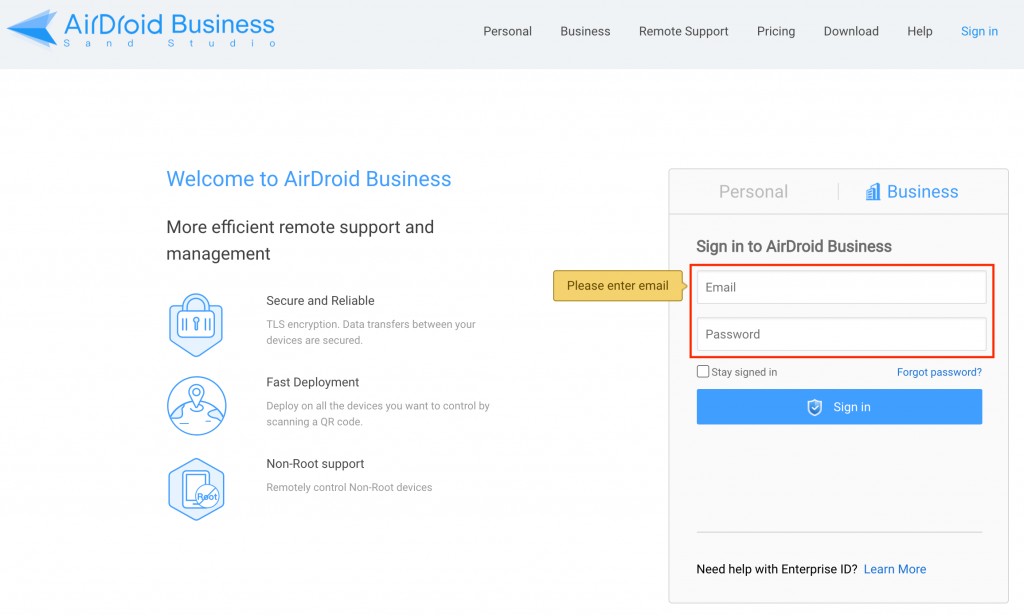
Step 2. Navigate to “Config File” and name your Android Kiosk profile
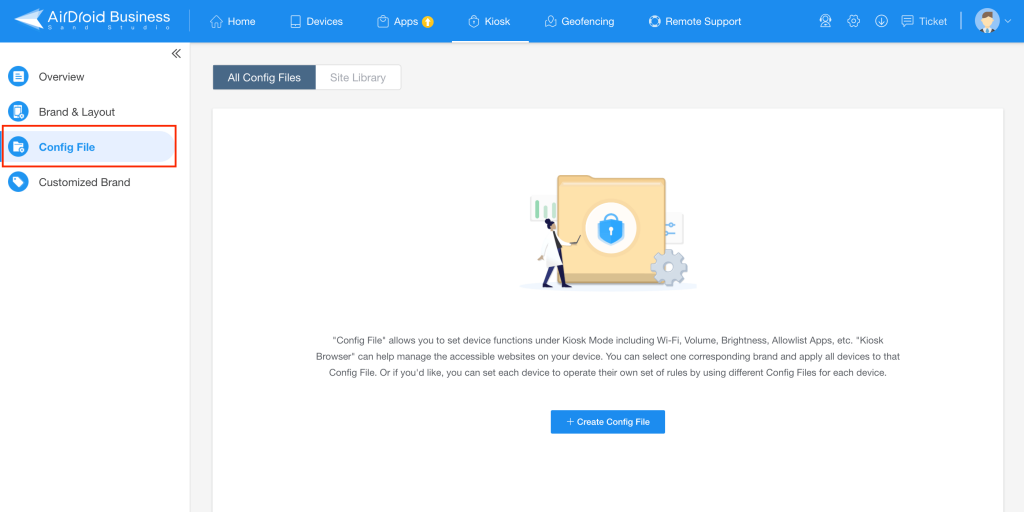
Step 3. Navigate to App Allowlist and choose the app you want to lockdown on your Android
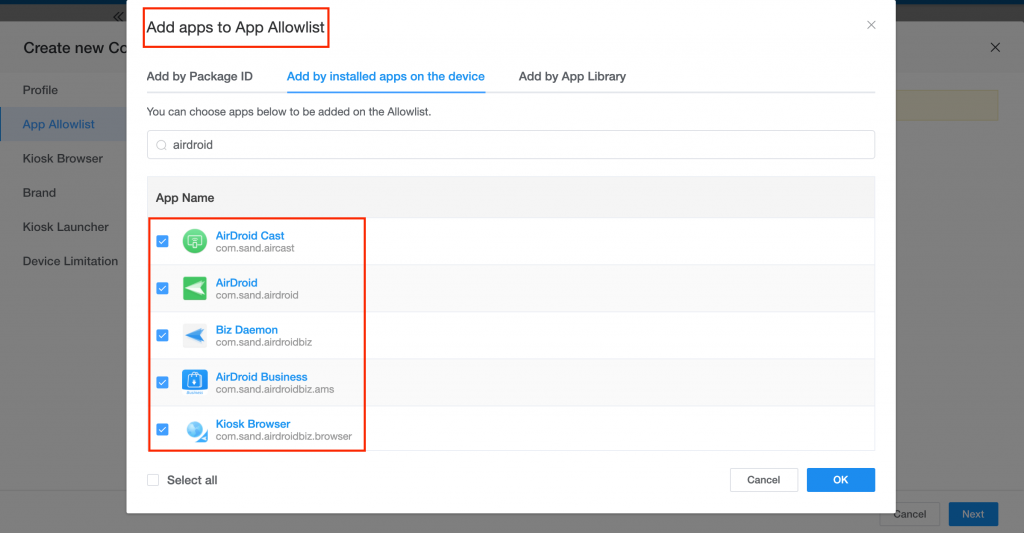
Step 4. Navigate to Kiosk Launcher and select the app you want to set up for Single App Kiosk Mode
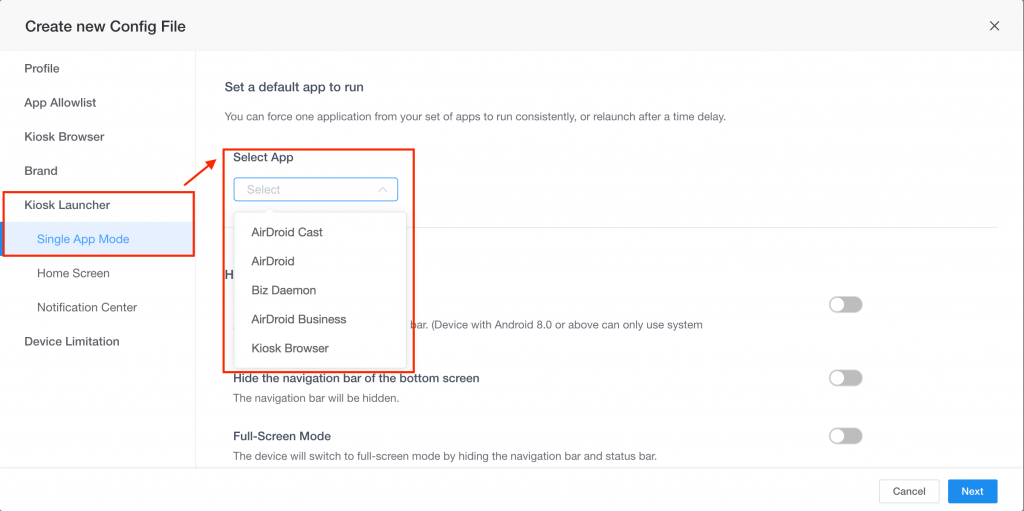
Step 5. Apply the kiosk profile to your selected devices or device groups
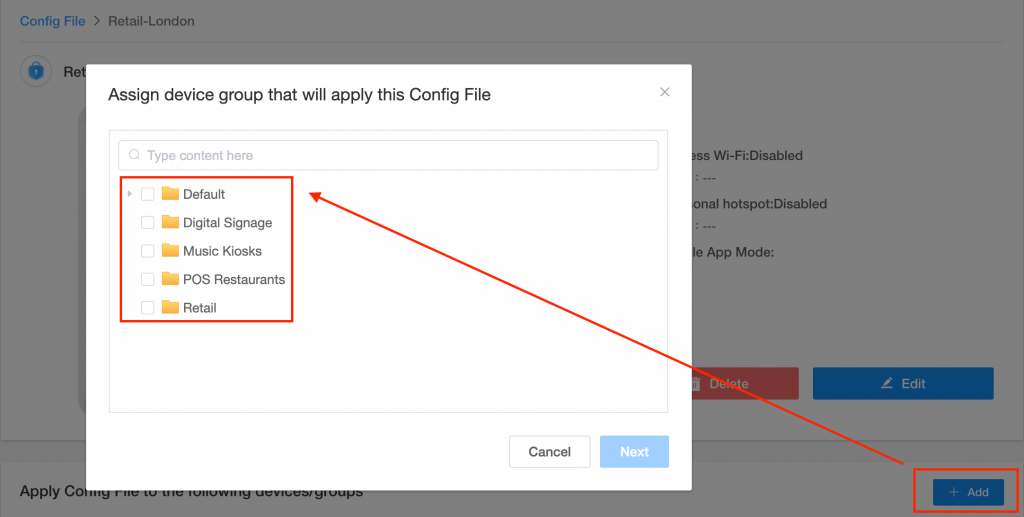
Apart from turning Android single app kiosk mode, you can also lock Android tablet to one website using “Website Whitelist” feature.
How to Exit Android Single App Kiosk Mode?
If you would like to remotely exit the Single App Kiosk Mode on Android devices , follow these two easy steps:
Step 1. Select the kiosk profile you had previously set up for Single App Kiosk Mode
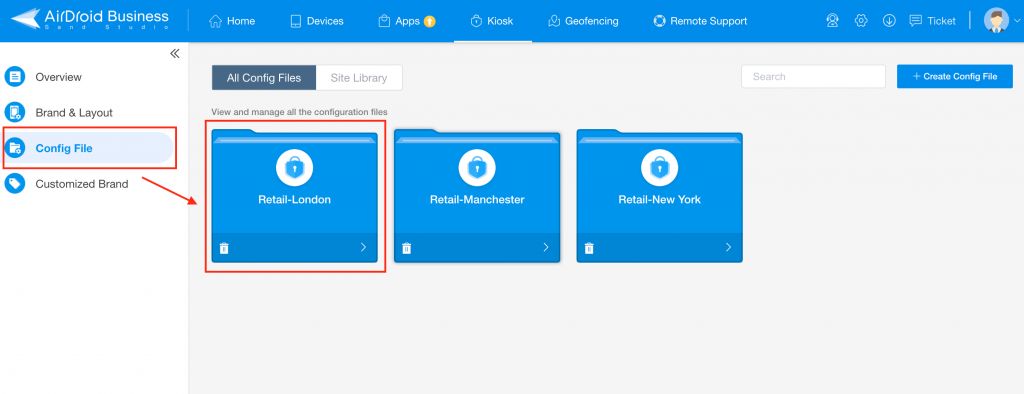
Step 2. Select the devices you want to exit from MDM Single App Mode and click “Remove”.
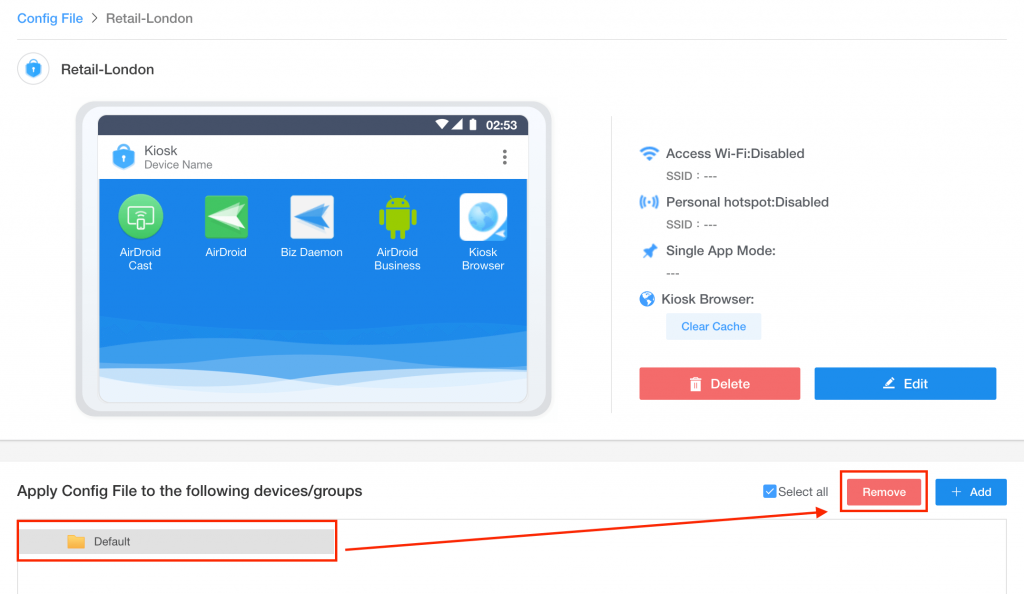
Android Single App Mode for Business
Single App Mode offers businesses great flexibility within the dynamic marketplace. Based on your organization’s objectives, you can apply Android Kiosk Mode in five different ways.

Self-service Kiosks
Self-service kiosks provide a faster and simpler way for customers to complete an intended task by themselves. Many industries are now adopting self-service kiosks to provide a better user experience while enhancing work productivity at the same time.
Healthcare: Hospitals or healthcare organizations place self-service kiosk machines at the reception for patients to check-in for appointments or pay for prescriptions. Hospitals simply need to install a kiosk lockdown app on Android devices and then complete setting up the profile from the instructions above.
Retail/Restaurants: Restaurants are now going digital by distributing tablets to customers for ordering food. By applying Android tablet kiosk mode, restaurants lock Android to one app, limit the tablet use for food ordering and payment only to reduce device malfunction.
For example, McDonalds and other fast food restaurants are already using self-service kiosks to minimize customers’ waiting time. Retail shops and supermarkets are deploying kiosk mode and lock Android tablets to one app for better engagement at self-checkout and product search activities. More organizations will adopt this mobile-first trend in their business model and it is critical to ensure workflows are streamlined when they make this digital transition.

Banking: Financial entities are placing self-service kiosks for customers to complete easy tasks such as cash withdrawal. Some are also turning tablets into multi-app Kiosk Mode for new customer onboarding, demo, or data collection.
READ MORE: How Self-Service Kiosk Technology is Revolutionizing Restaurants
Information Kiosks
The main purpose of information kiosks is to provide users another means to retrieve the information they need without consulting a staff member. This can greatly reduce frustrating communication between an organization and their customers. This type of interactive kiosks also help boost customer engagement.
Education: Schools or universities use information kiosks to display latest information or events. Additionally, classrooms may turn Android tablets into interactive kiosks with touch screen to keep students more focused and engaged. Schools can also use kiosk browser lockdown to prevent students from accessing undesirable websites.

Government: One prominent example is the tourist kiosks we see when we go traveling in different countries. Visitors are able to obtain trip information very quickly by checking places to go and eat on information kiosks. Other government-related kiosk cases include the ones used in local infrastructures such as libraries or administrative offices.
Corporate: Information kiosks used for corporates can mostly be seen at the reception for visitor registration or conference rooms where they display company news.
Internet Kiosks
Internet kiosks allow the public or your customers to have access to the internet, particular websites and applications where they can receive information or complete a certain task.
Retail: Many retailers use kiosk Android tablets to help businesses collect customer emails or shop better when they visit the store. Android tablet kiosk mode lets customers view company-related products on mobile kiosks without accidentally tampering device configurations. Secure tablet usage keeps companies from security risks and cyber threats.
READ MORE: IT Remote Management: 5 Best Practices for Retail
Transportation: Many airports deploy kiosk android tablets that offer internet to travelers for a limited period of time. The device will lock automatically when time runs out to ensure device and data security.

Wayfinding Kiosks
Wayfinding kiosks are used to navigate visitors around the location and offer details of nearby places to encourage them to explore more. This provides a more interactive way for users to engage with the place.
Hospitality: Hotels and resorts incorporate wayfinding kiosks to introduce all the facilities that are accessible to their clients, display enticing videos and encourage them to make the most of their stay.
Constructions: You’ll also see a lot of wayfinding kiosks when entering buildings that encompass different businesses such as shopping centers and company offices. These interactive kiosks can help you discover the right information you need, point the way, and save you a lot of time.
READ MORE Wayfinder Kiosk – Improving the Visitor and Employee Experience
Advertising display Kiosks
Advertising displaying kiosks refer to stand-alone kiosks, mobile devices or tablets that display digital media content. Sometimes they also come with dynamic features that invite users to interact with the screen and learn more about your business.

Retail: Retail is one of the industries that have been using advertising display kiosks or “digital signage” explicitly for the past few years. It not only attracts customers with fancier content but creates a more immersive experience during their shopping journey that eventually leads to higher sales and customer satisfaction.
Businesses are activating Single App Kiosk Mode on Android for commercial purposes. Organizations are benefiting from: lower data cost, less on-site travel for troubleshooting, and minimum data breach from end users. The ultimate goal is to prevent device malfunction, reduce IT workload, create better user experience, cut down costs, and most importantly grow your business continuously! Get started with AirDroid Business MDM solution and manage your Android Kiosks with ease today!

[…] using relevant applications at work to increase productivity. Furthermore, businesses can apply single app mode on Android devices and turn them into purposeful, interactive kiosks to improve customer […]
[…] to have your most sensitive details in a locked folder on your devices. Not only will this help keep your data safe from remote access breaches, but it will also prevent malicious attacks if your devices are lost or […]
[…] the device using single or multi-app mode. Single app mode limits access to only one application – this is ideal when all you want the drivers to do is […]
[…] restaurants’ self-service kiosks, IT admins can also use AirDroid Business to lock devices into single app kiosk mode to restrict users from modifying Android settings randomly. By proactively applying this […]
[…] mechanism that locks Android mobile phones or tablets screens and limits your device access into a single-app mode or applications of your choice. In addition, applying Kiosk Mode in Android devices lets you […]